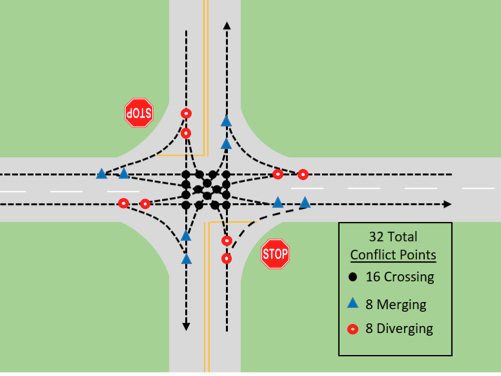Using a sophisticated driving simulator, LRRB-sponsored researchers determined that 400 and 600 feet of sight distance is insufficient at rural intersections. Drivers performed much better with 1,000 feet of sight distance, both at intersections and on main line roads responding to vehicles running stop signs. Researchers also noted that moving the stop bar closer to the main line at thru-stops would both increase the sight distance of waiting drivers and influence the main line drivers to slow down when approaching intersections. Safety could be increased with this very low-cost change.
For more information, visit the research project page.
